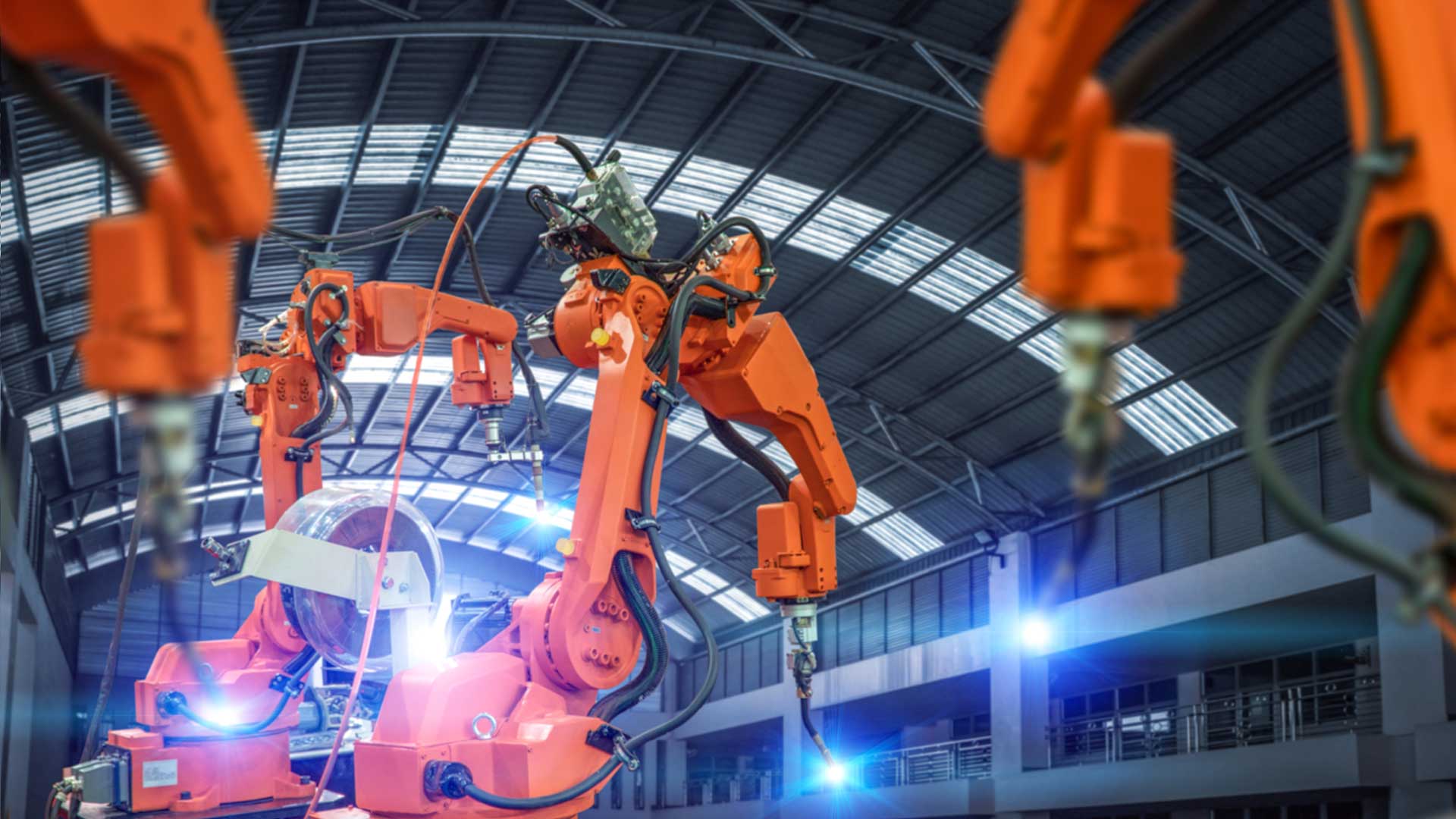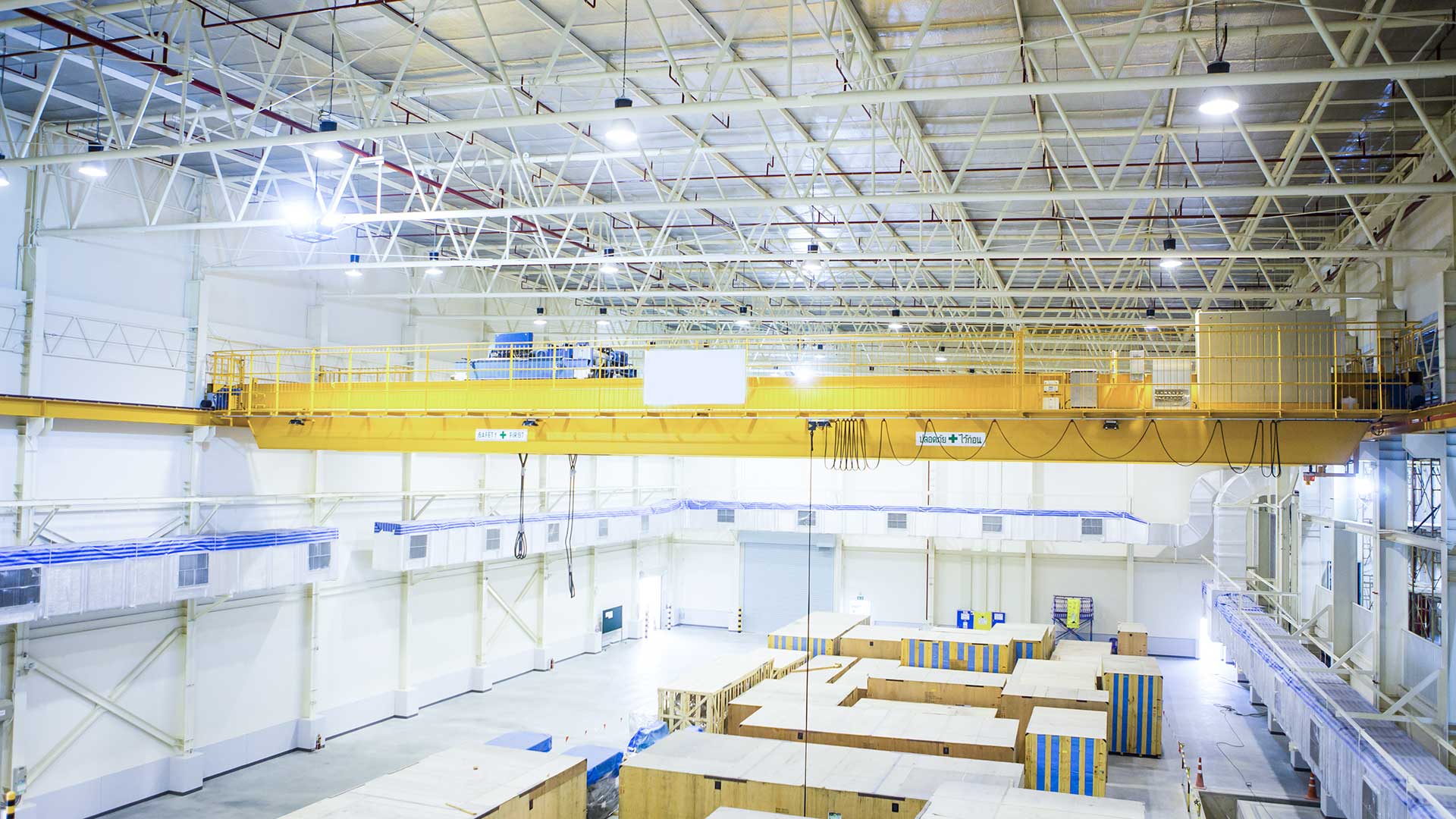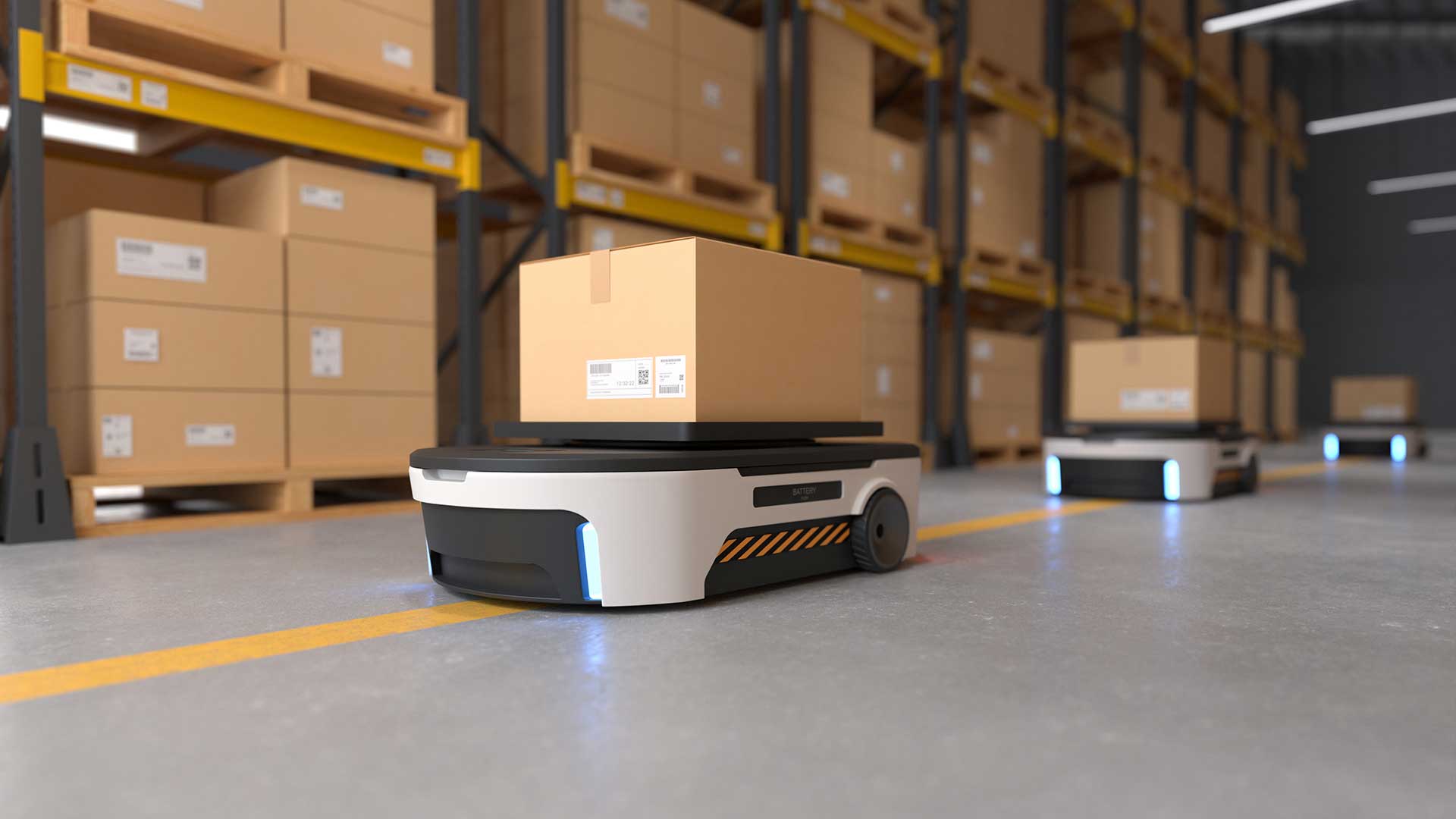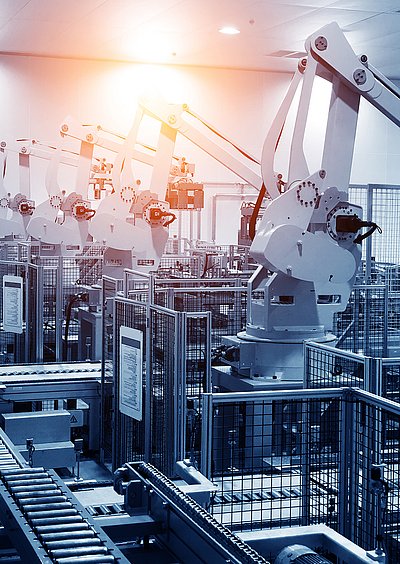Trend-setting sensors for industry
Radar for robotic & smart factory
Industry 4.0, smart factory, autonomous driving – these keywords are part of the modern and future world of technology. The areas are characterised by a high degree of automation, self-organisation, digitisation, and self-learning systems. And robotics is playing a central role. Thanks to innovative sensor technology, the autonomous or automated machines are able to perceive their environment. This way, industrial robots are able to position themselves, navigate, or respond to events in their environment.
In this growing market, the technical possibilities and requirements are rapidly evolving. With our advanced radar solutions and research work, we are contributing to the innovation process.
Our 24 GHz sensors are integrated in a variety of applications. This varies from automatic door opening to fill level measurement in tanks and tracking systems in the security sector. As further development work is carried out on the higher frequencies, the applications for this sensor technology will expand enormously thanks to newly achieved technical advantages. For example, for the first time radar is also attractive for use in highly complex scenarios such as personal protection in the machine’s environment, collision protection on autonomous robots and vehicles, or in collaborative work between humans and machines.
Technological perspective:
Interact better with high resolution.
In complex industrial environments, sensors’ resolution is very important. This factor determines how accurately the robot perceives its environment. The more detailed the resolution and thus the ability to distinguish objects, the more precisely and autonomously the machine carries out movements or navigates.
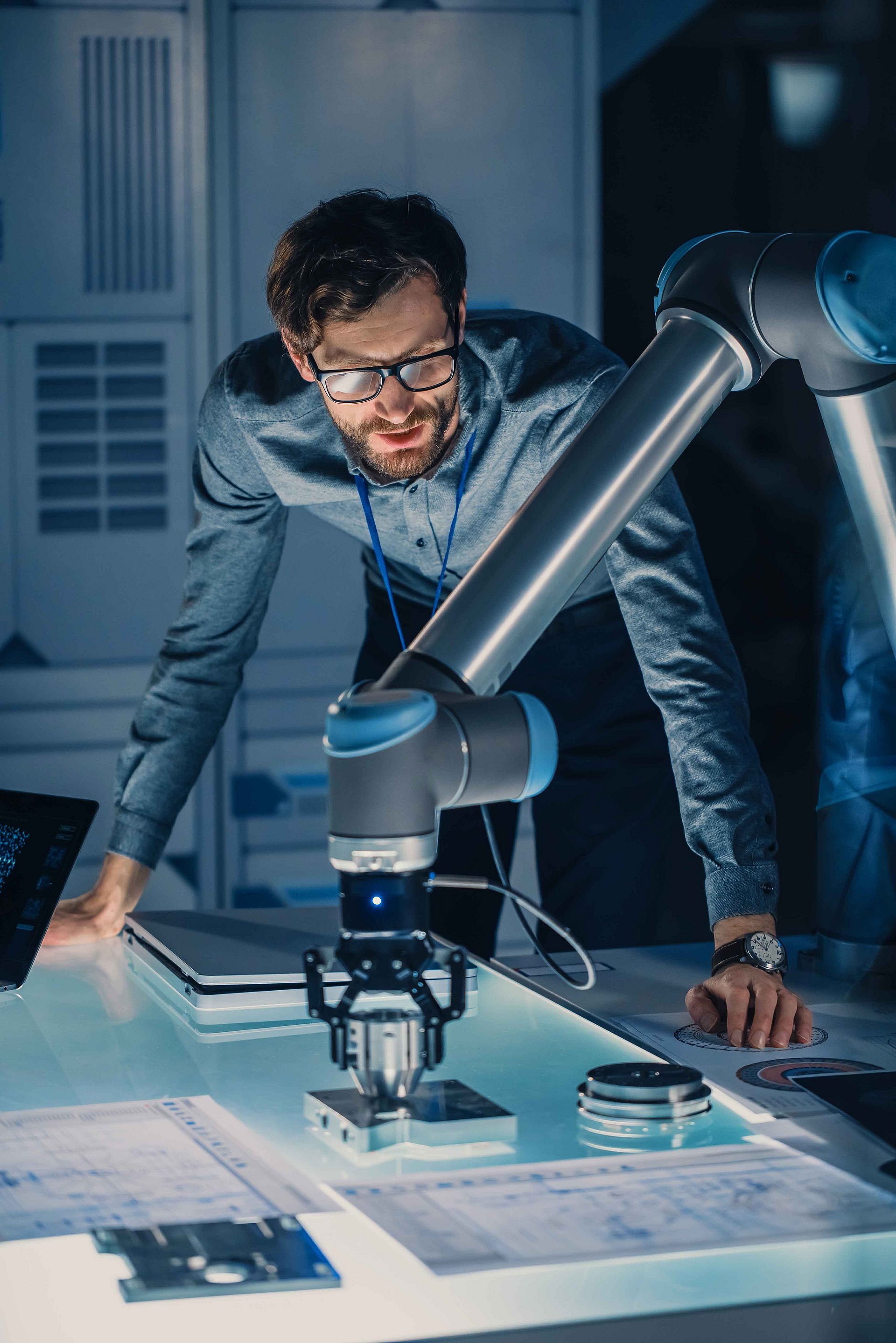
Radar sensors detect objects over a maximum of four dimensions:
The distance.
The distance resolution is defined via the bandwidth used. 60 GHz sensors usually have a bandwidth of up to 4 GHz, which corresponds to a distance resolution of a few centimetres. This is many times higher than in a 24 GHz band, where a maximum of 250 MHz can be used, and the distance resolution is about 75 cm.
The speed.
Objects are differentiated through measurements of their speed.
The angular position in azimuth and elevation angle.
The angular resolution is determined via the number and combination of antennas. Whenever two objects cannot be differentiated via their distance and speed, the angular resolution is necessary. If the information about distance, speed, and angular position is known, an object can be positioned in space (position along x-, y-, and z-axis) with a high degree of precision.
Strengths of radar technology for robotics:
3D environmental monitoring
continuous object localization to keep machine interruptions as minimal as necessary
no failures due to dirt, heat, skew positions, protective clothing, or dust in a harsh working environment
increased efficiency through additional information acquired (e.g. statistics)
recording of speed, direction of movement, distance, and angular position
high ranges, thus enabling early interaction
anonymous movement tracking of persons or objects
suitable for outdoor & indoor (independent from light and weather conditions)
classification of objects: distinction between humans and objects
additional flexibility: adjustable detection area, integration on stationary and mobile units, no need to program maps of surroundings
See the surroundings with radar
By analysing the reflections of electromagnetic waves, radar sensors construct an image of their environment in the form of a cloud of points. Using appropriate analysis algorithms and clustering, movement histories can also be tracked and objects classified. In high-resolution, 4-dimensional radar detection, object outlines can also be recognised due to their angular position in elevation, which provides height information.
Collision protection, e.g. on
AGVs
cranes
forklifts
off-road vehicles
The sensor solutions deployed so far usually record only a sectional plane of their environment. They thus cannot detect objects protruding into the travel path. Only objects that are exactly on a line in front of the sensor are detected. It thus doesn’t present a problem for the machine to be tilted or in a skew position with an unevenly distributed load on the transport vehicle, nor does unevenness in the ground.Radar sensors view their environment in three dimensions and can be more flexibly positioned due to their optimised field of view. Thanks to 3D detection of their surroundings, radar also perceives objects that are not directly in the driving path. They also have no weaknesses when used outside – darkness, dirt, bad weather, or dust are no problem. In addition, a radar sensor’s range can be flexibly adapted to the requirements. Radar reliably detects obstacles even at long distances and recognises obstacles early on. The radar data can also assist with navigation.
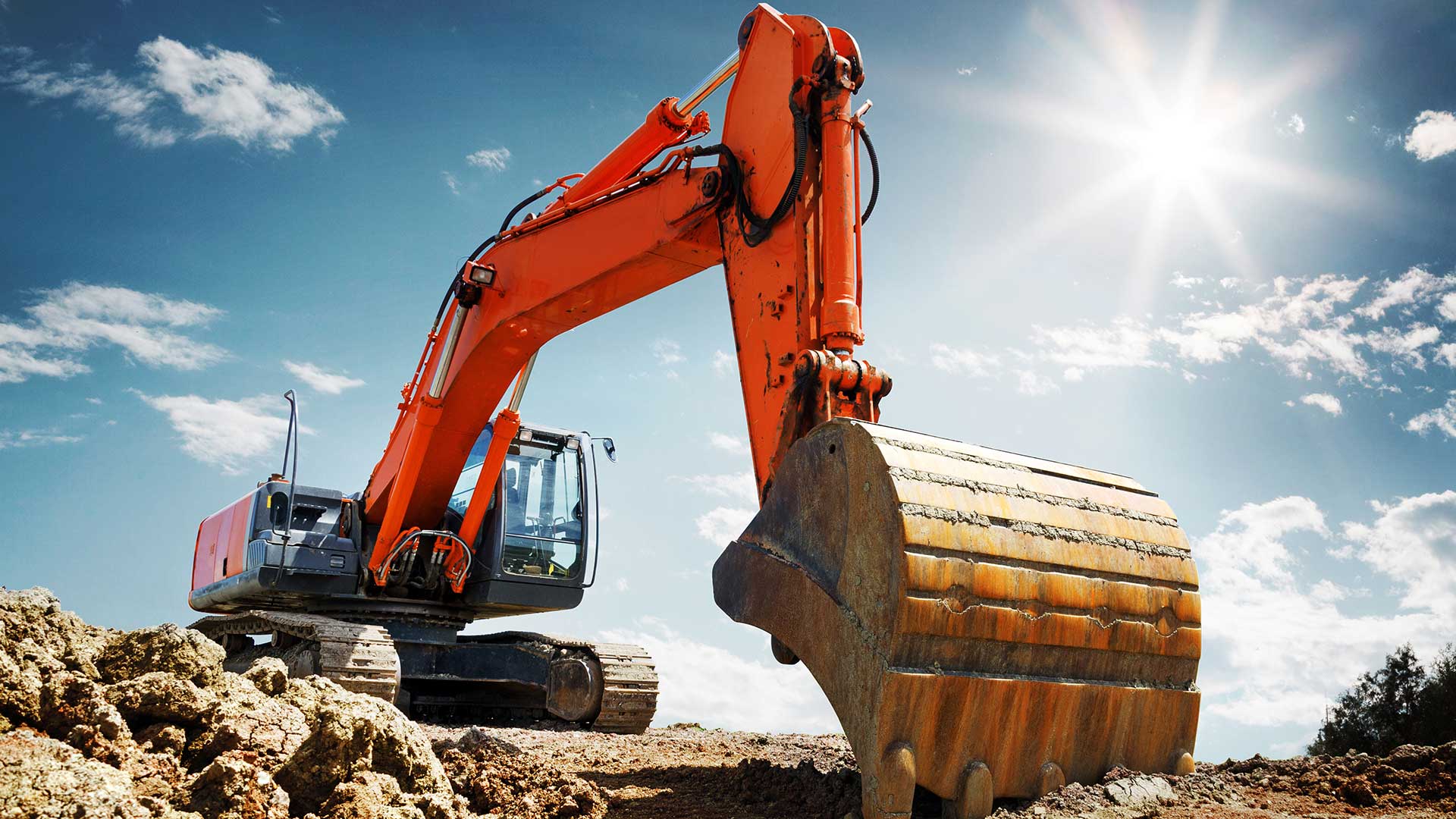
Personal protection, e.g. with
- stationary machines
- AGVs
- off-road vehicles
- transport vehicles, e.g. bin lorries
When the sensors are used to protect against injury or damage, the requirements in terms of reliable functionality are particularly high. But many technologies often reach their limits in harsh environments. Changing lighting conditions, rain, snow, and exposition to dense particles make using optical sensors difficult or impossible.
Robust radar technology, on the other hand, puts its advantages on full display in such difficult environments. If the 3D environmental monitoring systems are introduced into production halls, this unleashes new possibilities: room-spanning, continuous monitoring in real time will soon render bulky protective fences obsolete. The 3D environmental sensors can be used for more than safety-related functions: their high ranges and extensive data collection also prove useful for statistical analyses or for activating other functions.
- railway crossings
- closing edges of, e.g., doors, gates, barriers
Collaborative work, e.g.
- robot arms
Collaborative work between people and machines also requires ensuring safety. First and foremost, the aim is to avoid collisions with objects and dangerous accidents with people. However, industrial robots are taking on increasingly complex tasks in this area. Therefore, the requirements are also somewhat different from those for autonomous or automated vehicles or monitoring a machine’s surroundings. Nowadays, the robot arms take on supporting functions and work automatically. In the future, however, humans and machines will work hand in hand or interact directly with each other. This requires a particularly high resolution and very high measuring accuracy. In addition to ensuring the greatest possible precision in work steps, people’s bodies and limbs must always be protected. Due to the close proximity between the person and the machine, extremely fast reaction times are necessary, which are achieved through short sensor cycle times.
